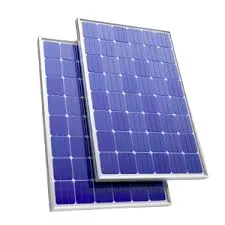700 Watt Solar Panel Cost and Benefits for Your Energy Needs
The Price of 700-Watt Solar Panels An Overview
In recent years, solar energy has emerged as a leading alternative to fossil fuels, pushing forward the agenda for renewable energy. As many homeowners and businesses look for ways to reduce their carbon footprints, solar panels have seen an increase in popularity. A specific focus has been the 700-watt solar panel, which offers a substantial amount of power generation that appeals to a variety of consumers. This article explores the price of 700-watt solar panels, the factors that influence their cost, and the overall value they represent.
Understanding Solar Panel Pricing
The price of solar panels can fluctuate due to a variety of factors including manufacturing costs, technological advancements, market demand, and governmental policies. As of 2023, the average cost for solar panels ranges widely, but a 700-watt solar panel typically costs between $500 to $1,200. This figure varies with brand, efficiency rates, and overall quality. For instance, premium brands that use advanced technology may charge towards the higher end of this spectrum, while lesser-known brands may come in at the lower end.
Factors Influencing the Price
1. Technology The efficiency of a solar panel is a critical factor in its price. Higher efficiency panels convert more sunlight into electricity, making them more desirable and, consequently, more expensive. Innovations such as bifacial designs, which capture sunlight on both sides of the panel, or panels with integrated microinverters can add to the cost.
2. Materials The materials used in the production of solar panels also affect pricing. Panels constructed with high-quality materials like monocrystalline silicon tend to be more efficient and long-lasting, thus commanding higher prices compared to those made with polycrystalline or thin-film technologies.
700 watt solar panel price

3. Installation Costs Beyond the price of the panels themselves, installation costs can significantly influence the total investment. Hiring experienced installers often costs between $0.50 to $1.00 per watt, meaning that the installation of a 700-watt system could add an additional $350 to $700. Factors such as roof type, complexity of the installation, and geographic location also play roles in installation expenses.
4. Market Demand The overall demand for solar panels influences their prices. When demand spikes, as seen during periods of government incentives or natural disasters prompting homeowners to seek alternative energy sources, prices may increase. Conversely, during times of reduced demand, prices can decrease.
5. Government Incentives Many countries offer rebates, tax credits, and other incentives for solar energy installations, which can effectively reduce the upfront cost. In the U.S., for example, the Federal Investment Tax Credit (ITC) allows homeowners to deduct a substantial percentage of the cost of solar systems from their federal taxes.
Long-Term Value
While the initial cost of a 700-watt solar panel can seem significant, it is important to consider the long-term savings associated with solar energy. Homeowners can save on electricity bills, and in many regions, they may even receive credits for excess energy produced. Additionally, solar panels can add value to a property, making it an attractive investment.
Conclusion
The price of 700-watt solar panels reflects a balance of various factors, from technologies and materials to installation costs and market dynamics. Despite the upfront investment, the long-term benefits of using solar energy can provide significant financial savings, making it a viable option for many homeowners and businesses. As technology continues to improve and societal focus shifts toward sustainability, the cost of solar energy is likely to decrease, making solar panels even more accessible. In conclusion, understanding the price and value of 700-watt solar panels is crucial for anyone considering transitioning to renewable energy.
-
String Solar Inverter: The High-Efficiency Solution for Smart Solar EnergyNewsJul.14,2025
-
Revolutionizing Rooftop Energy with the Power of the Micro Solar InverterNewsJul.14,2025
-
Power Independence with Smart Off Grid Solar Inverter SolutionsNewsJul.14,2025
-
On Grid Solar Inverter: Powering the Future with Smart Grid IntegrationNewsJul.14,2025
-
Monocrystalline Solar Panels: High-Efficiency Power for the Future of Clean EnergyNewsJul.14,2025
-
Bifacial Solar Panel: A Smarter Investment for Next-Generation Energy SystemsNewsJul.14,2025







